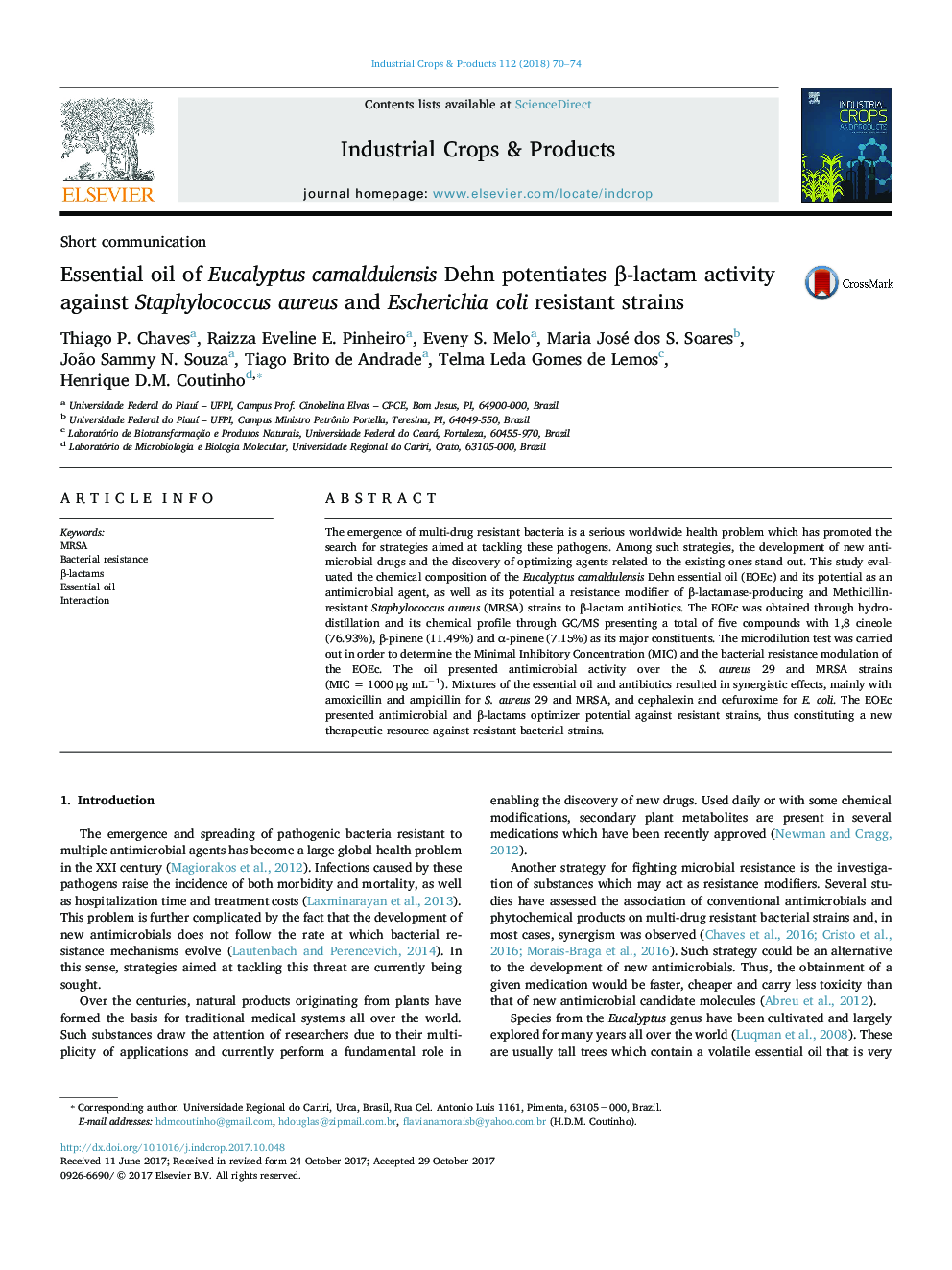| Article ID | Journal | Published Year | Pages | File Type |
|---|---|---|---|---|
| 8880590 | Industrial Crops and Products | 2018 | 5 Pages |
Abstract
The emergence of multi-drug resistant bacteria is a serious worldwide health problem which has promoted the search for strategies aimed at tackling these pathogens. Among such strategies, the development of new antimicrobial drugs and the discovery of optimizing agents related to the existing ones stand out. This study evaluated the chemical composition of the Eucalyptus camaldulensis Dehn essential oil (EOEc) and its potential as an antimicrobial agent, as well as its potential a resistance modifier of β-lactamase-producing and Methicillin-resistant Staphylococcus aureus (MRSA) strains to β-lactam antibiotics. The EOEc was obtained through hydro-distillation and its chemical profile through GC/MS presenting a total of five compounds with 1,8 cineole (76.93%), β-pinene (11.49%) and α-pinene (7.15%) as its major constituents. The microdilution test was carried out in order to determine the Minimal Inhibitory Concentration (MIC) and the bacterial resistance modulation of the EOEc. The oil presented antimicrobial activity over the S. aureus 29 and MRSA strains (MIC = 1000 μg mLâ1). Mixtures of the essential oil and antibiotics resulted in synergistic effects, mainly with amoxicillin and ampicillin for S. aureus 29 and MRSA, and cephalexin and cefuroxime for E. coli. The EOEc presented antimicrobial and β-lactams optimizer potential against resistant strains, thus constituting a new therapeutic resource against resistant bacterial strains.
Related Topics
Life Sciences
Agricultural and Biological Sciences
Agronomy and Crop Science
Authors
Thiago P. Chaves, Raizza Eveline E. Pinheiro, Eveny S. Melo, Maria José dos S. Soares, João Sammy N. Souza, Tiago Brito de Andrade, Telma Leda Gomes de Lemos, Henrique D.M. Coutinho,
